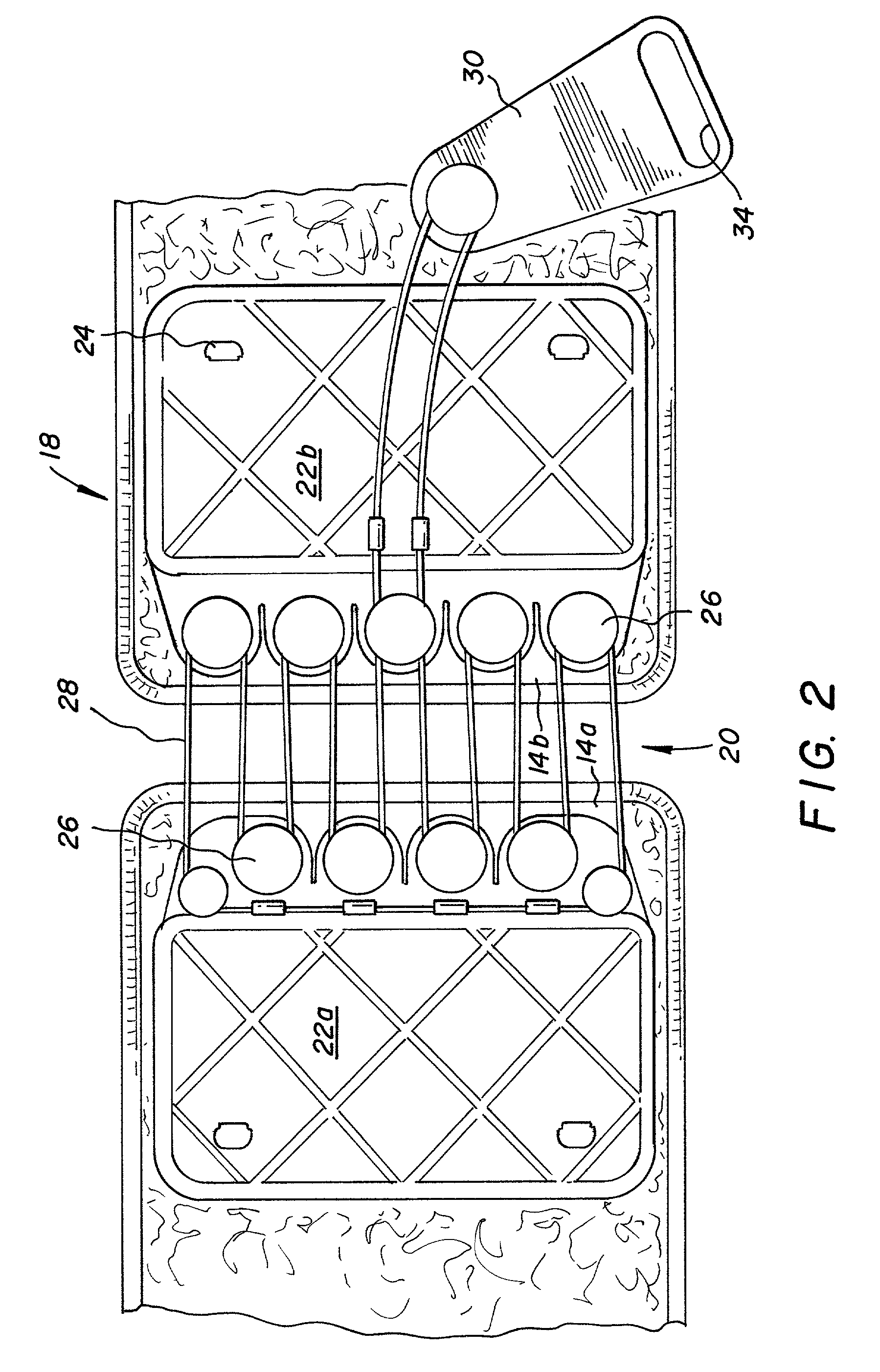Orthotic trauma device
a technology of orthotic device and pelvis, which is applied in the field of orthotic device, can solve the problems of inability to attempt to immobilize pelvic fractures by such means, inconvenient use, and additional harm, and achieve the effects of stabilizing the pelvis, reducing the movement of bone fragments, and reducing the volume of bled blood
- Summary
- Abstract
- Description
- Claims
- Application Information
AI Technical Summary
Benefits of technology
Problems solved by technology
Method used
Image
Examples
Embodiment Construction
[0020] FIG. 1 shows a first embodiment of the present invention. FIG. 1 illustrates an orthotic trauma device 10 in an assembled position as it would be worn by a patient. The orthosis 10 includes a bracing portion or orthosis body 12, generally having a belt-like shape and made of a material suitable to achieve the type of support sought in treating the condition of the patient wearing the orthotic device. Typically this would include pliant and semi-rigid materials, although a more pliant material is generally preferred to conform substantially to the body of the wearer and to provide support but avoid causing pressure problems to the skin, such as the formation of blisters. The material from which the orthosis body is formed should also be easily cut by a scissors or shears, particularly of the type commonly used or found in hospitals, emergency medical facilities, ambulances, or first aid kits to cut various kinds of adhesive tape and gauze. Suitable materials include canvas, co...
PUM
 Login to View More
Login to View More Abstract
Description
Claims
Application Information
 Login to View More
Login to View More - R&D
- Intellectual Property
- Life Sciences
- Materials
- Tech Scout
- Unparalleled Data Quality
- Higher Quality Content
- 60% Fewer Hallucinations
Browse by: Latest US Patents, China's latest patents, Technical Efficacy Thesaurus, Application Domain, Technology Topic, Popular Technical Reports.
© 2025 PatSnap. All rights reserved.Legal|Privacy policy|Modern Slavery Act Transparency Statement|Sitemap|About US| Contact US: help@patsnap.com



